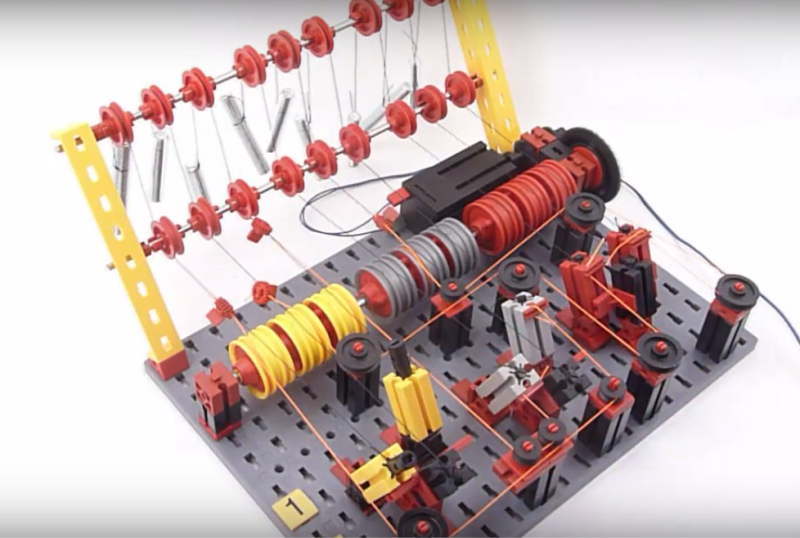One of the hardest things about studying electricity, and by extension electronics, is that you generally can’t touch or see anything directly, and if you can you’re generally having a pretty bad day. For teaching something that’s almost always invisible, educators have come up with a number of analogies for helping students understand the inner workings of this mysterious phenomenon like the water analogy or mechanical analogs to electronic circuits. One of [Thomas]’s problems with most of these devices, though, is that they don’t have any amplification or “fan-out” capability like a real electronic circuit would. He’s solved that with a unique mechanical amplifier.
Digital logic circuits generally have input power and ground connections in addition to their logic connection points, so [Thomas]’s main breakthrough here is that the mechanical equivalent should as well. His uses a motor driving a shaft with a set of pulleys, each of which has a fixed string wrapped around the pulley. That string is attached to a second string which is controlled by an input. When the input is moved the string on the pulley moves as well but the pulley adds a considerable amount of power to to the output which can eventually be used to drive a much larger number of inputs. In electronics, the ability to drive a certain number of inputs from a single output is called “fan-out” and this device has an equivalent fan-out of around 10, meaning each output can drive ten inputs.
[Thomas] calls his invention capstan lever logic, presumably named after a type of winch used on sailing vessels. In this case, the capstan is the driven pulley system. The linked video shows him creating a number of equivalent circuits starting with an inverter and working his way up to a half adder and an RS flip-flop. While the amplifier pulley does take a minute to wrap one’s mind around, it really helps make the equivalent electronic circuit more intuitive. We’ve seen similar builds before as well which use pulleys to demonstrate electronic circuits, but in a slightly different manner than this build does.















It is nice to see someone who appreciates the three requirements for logic.
Amplification, Inversion and AND, or OR :)
The Nand gate does all three, but still it is three parts.
(Diode logic and do two, but amplification is tough, even with tunnels)
-G.
Each of the gates has a certain amount of “idle” friction because the string is always rubbing against the wheel. I wonder how long it’ll run before wearing out and snapping one of the strings?
I wonder if he has read A K Dewdneys “rope and pulley computer” article?
for sure these are fun but i think you need a physical analogy when you are teaching the concepts, not the engineering. it’s a thought experiment, not a doodad. a fluid analogy is fantastic for teaching things like ohm’s law or kirchhoff’s law but imo the goal should be to understand these laws and then build circuits using actual electronic components.
otoh, sometimes someone comes up with a toy that teaches a kid to think like an engineer (ponder the capabilities and limitations of your tools and materials) even if it doesn’t really help them understand electronics per se
Check out Spintronics for a really cool implementation of pulley circuits! In addition to transistors they have capacitors, inductors, and diodes. They have a 2x fan-out junction with a really clever planetary gear that can also function as a 2:1 transformer.
https://upperstory.com/en/spintronics/